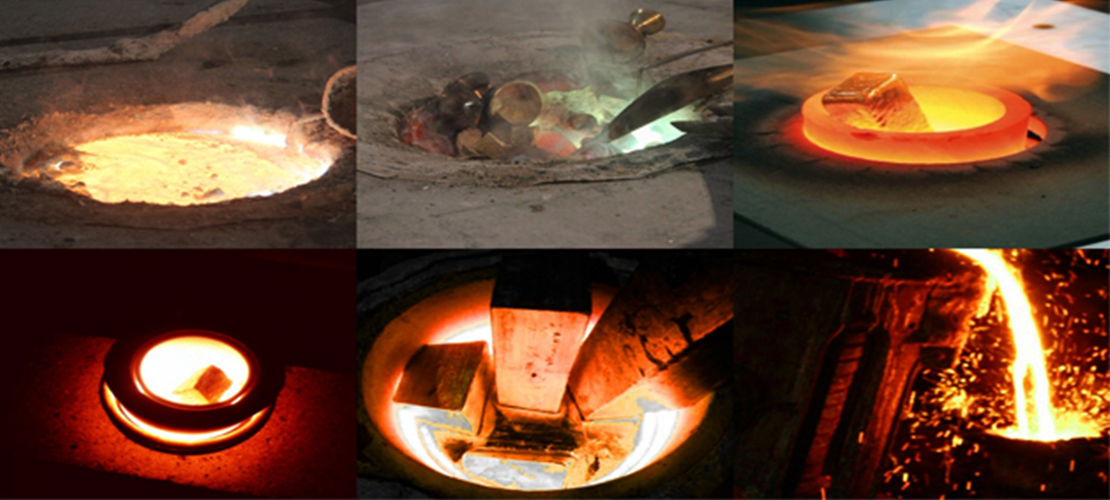Aug. 19, 2025

Steel melting induction furnace utilize electromagnetic induction to heat metals in a steelmaking process. They are primarily categorized into two types: the trough type and the crucible type.
Trough types utilize the Joule heat of the molten metal in the trough for continuous operation, while crucible types rely on the heat of the charge itself to melt the metal.
IF melting furnace can be used to melt a variety of metals, including steel, cast iron, and non-ferrous metals and their alloys. The operating principle of an induction furnaces is similar to that of a transformer: a magnetic field generated by the primary winding induces a current in the metal, thereby heating and melting it.
The advantage of an induction furnace is the ease with which the input power can be adjusted, allowing for precise control of the melt pool temperature, insulation, and batch tapping to meet the melting requirements of products with varying composition. Once the molten steel reaches approximately 1650°C, it can be poured into a ladle for subsequent refining or casting. Crucible induction furnaces have lower power factors and thermal efficiency, but they can melt a wide range of materials.
The workflow of an induction melting furnace for steelmaking primarily includes charging, heating, melting, tapping, and cleaning.
First, a charge of metal, such as scrap steel, is loaded into the crucible or trough of the induction furnace.
An alternating current is then applied, generating eddy currents in the charge through electromagnetic induction, causing it to heat and melt.
The molten steel is then poured through the taphole into a ladle for further refining or casting.
Finally, the furnace is cleaned to prepare for the next melting cycle.
1. Charge Loading:
Charges of metal, such as scrap steel and iron, are loaded into the crucible or trough of the IF induction furnaces.
2. Heating:
Alternating current is applied to the induction coil, generating an alternating magnetic field. This field induces eddy currents in the charge.
3. Melting:
The heat generated by the eddy currents rapidly heats the charge, melting it and forming molten steel.
4. Tapping:
Once the set temperature is reached, the taphole is opened and the molten steel is poured into a ladle for further refining or casting.
5. Cleaning:
After tapping, the melting furnace is cleaned of slag and scale to prepare for the next melting cycle.
The above describes the workflow for steel melting induction furnace . If you have any further questions or needs regarding melting furnaces, induction furnaces, metal smelting furnaces, etc., please feel free to contact us.
Latest News
Latest Products
Customized metallurgical machinery and equipment range: Electric Arc Furnace, Submerged Arc Furnace, LF Refining Furnace, Vacuum Furnace, Induction Furnace, Dust Remove System, Water Treatment Equipment, etc. Providing the most advanced equipment integration services, metallurgical equipment can be customized according to different needs of customers, and production capacity can be adjusted according to customer requirements.
Electric Arc Furnace
Submerged Arc Furnace
LF Refining Furnace
VD / VOD Vacuum Refining Furnace
Induction Furnace
Furnace Accessories
Navigation
E-mail: anna@srfurnace.com
Tel: +86 159 2955 5868
WhatsApp: +86 159 2955 5868
Add:
Room 102, Building 7A, Free Trade Xintiandi, Fengdong Avenue, Fengdong New Town, Xi'an City, Shaanxi Province
